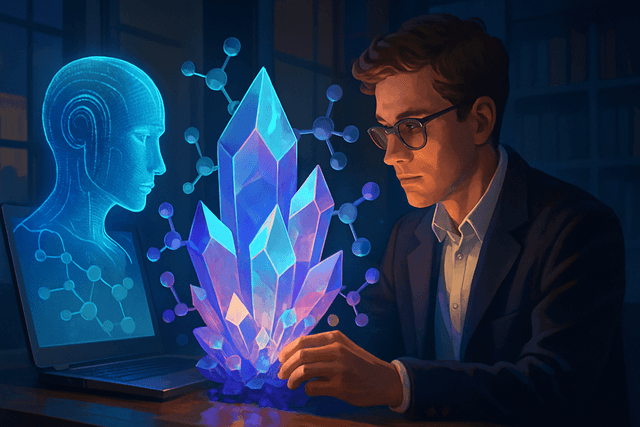British researchers have created a powerful new AI tool that could revolutionize how scientists discover and design new materials.
The team from the University of Liverpool and the University of Southampton has unveiled CrystalGPT, officially designated as Molecular Crystal Representation from Transformers (MCRT). This transformer-based model was pre-trained on 706,126 experimental crystal structures from the Cambridge Structural Database, allowing it to self-learn the complex language of molecular crystals.
What makes CrystalGPT unique is its dual-representation approach. The model combines graph-based atomic bond analysis with topological imaging capabilities, enabling it to process both detailed molecular structures and broader patterns simultaneously. This multi-modal approach gives the AI a comprehensive understanding of crystal properties at both micro and macro levels.
"MCRT was intended to be a foundation model that can be easily fine-tuned to the problem at hand, even with small amounts of available data," explains team member Xenophon Evangelopoulos from the University of Liverpool. This ability to work effectively with limited data is particularly valuable in chemistry, where laboratory experiments and calculations are often expensive and time-consuming.
The model employs four different pre-training tasks to extract both local and global representations from crystals. When fine-tuned for specific applications, CrystalGPT can predict key material properties like density, porosity, and symmetry with remarkable accuracy using just a fraction of the data traditionally required.
The implications for materials science are significant. Traditional computational methods for predicting crystal structures and properties are notoriously resource-intensive. CrystalGPT sidesteps these limitations, potentially accelerating discoveries in pharmaceuticals, organic electronics, battery development, and porous materials for gas storage. As Professor Andy Cooper from Liverpool notes, the model has "learned the most distinctive patterns within these crystals" and "how these patterns relate to practical properties," making it a powerful tool for materials innovation.

